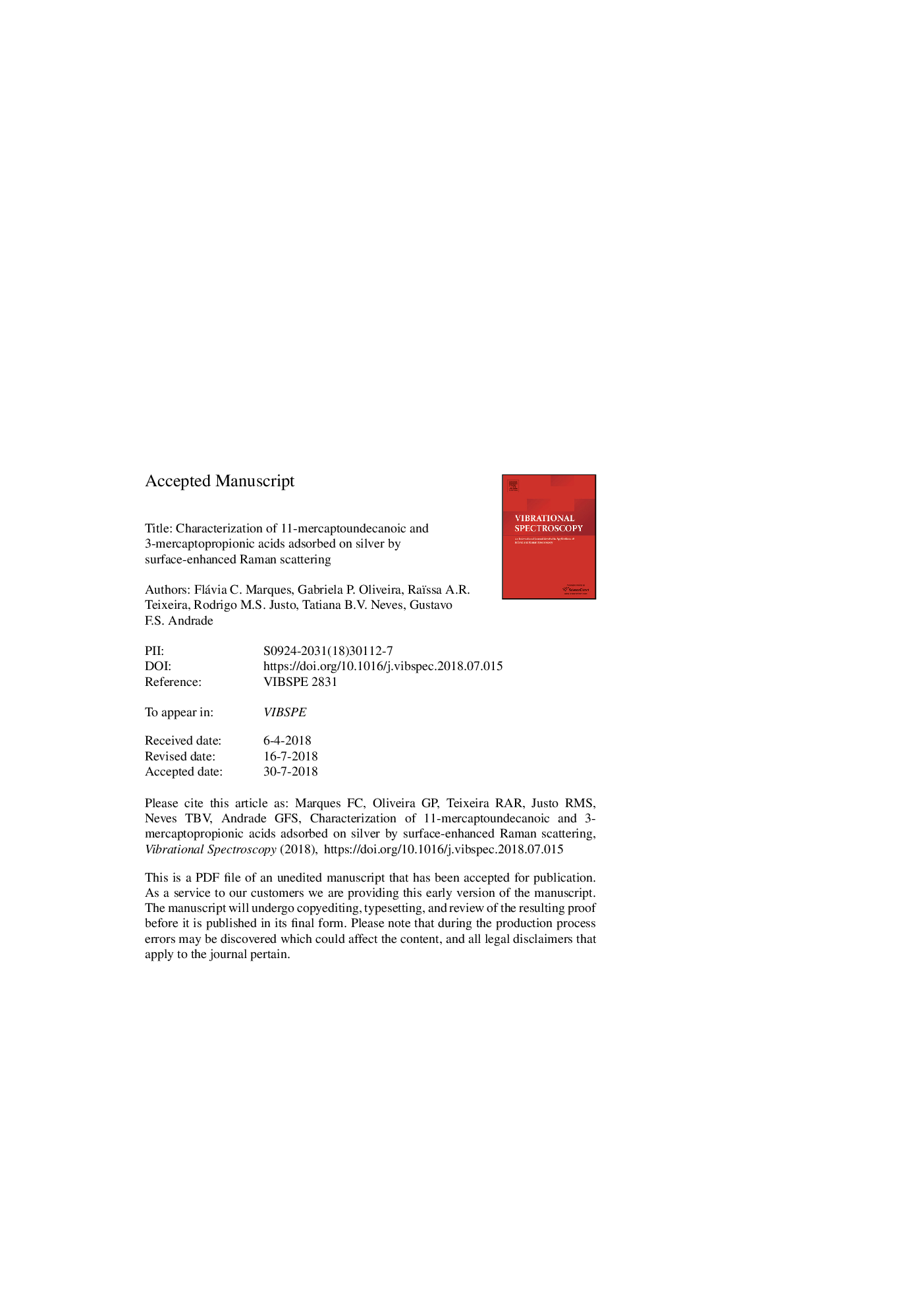| Article ID | Journal | Published Year | Pages | File Type |
|---|---|---|---|---|
| 11005866 | Vibrational Spectroscopy | 2018 | 22 Pages |
Abstract
Functionalized n-alkanethiols such as 11-mercaptoundecanoic (MUA) and 3-mercaptopropionic (MPA) acids are likely to adsorb in silver nanoparticles (AgNPs) solely through the thiol group (-SH) or also involving the carboxylate group (âCOOâ) in their structures. The relative tendency is closely related to pH conditions, solvent or the surface potential of the metallic nanoparticles. The SERS effect (Surface Enhancement Raman Scattering) was used for improving the understanding of MUA and MPA group interaction as well as the orientation of these organic compounds adsorbed on AgNPs and the influence of Cu(II) in solution. When analyzing the MPA SERS spectrum, it was verified that the thiol moiety was preferred to adsorb on the AgNPs surface in the thiolate form, presenting both anti and gauche conformations in both acidic and basic media. MUA SERS spectrum however, indicated that solely an anti conformation for the thiol moiety adsorbed on the AgNPs surface in both acidic and basic media. Adding Cu2+ ion resulted in coordination to the carboxyl or carboxylate moieties was confirmed by the downshift of the band assigned to OCO stretching. The presence of Cu(II) increased the tendency of gauche conformation for MPA; the coordination of MUA to Cu(II) resulted in a more upright conformation of the carboxylic/carboxylate moieties in both acidic and basic media, respectively.
Keywords
Related Topics
Physical Sciences and Engineering
Chemistry
Analytical Chemistry
Authors
Flávia C. Marques, Gabriela P. Oliveira, Raïssa A.R. Teixeira, Rodrigo M.S. Justo, Tatiana B.V. Neves, Gustavo F.S. Andrade,
